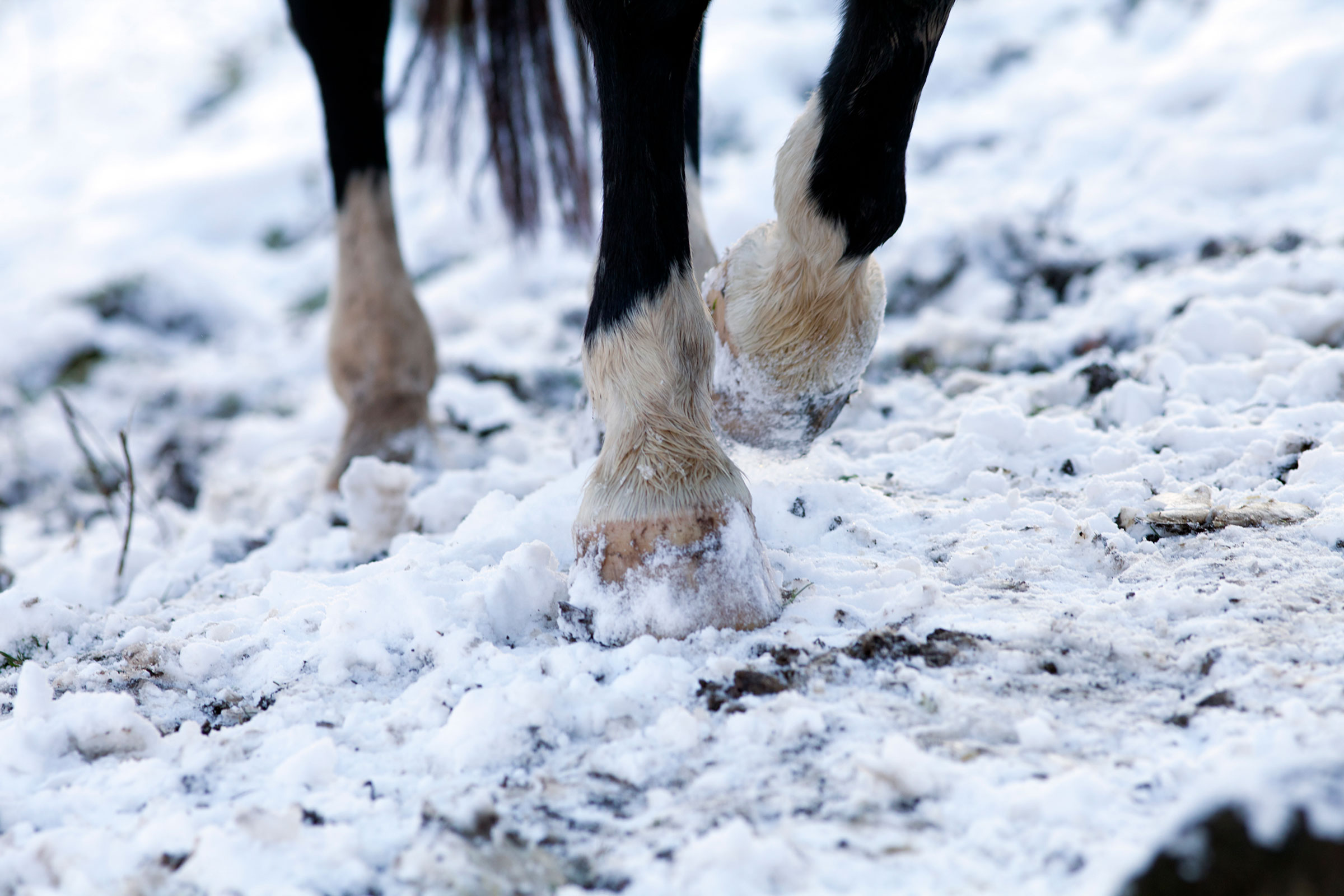
Generally speaking, horse hooves tend to grow more slowly in the winter. However, regularly scheduled visits from a farrier are still important and should remain on schedule. Horses should have their hooves trimmed every six to 12 weeks, depending on each horse and the amount of hoof they grow.
Snow and/or ice compaction is often observed in horse hooves. Such compaction makes it difficult for the horse to walk, increasing the chance of slipping or falling and possibly putting increased pressure on tendons and joints. Therefore, regular hoof picking is necessary to minimize the chance of injury. Ideally, hooves should be picked on a daily basis. Particular attention should be given after a heavy snowfall.
Shod vs. Not Shod?
Sole bruising can be an issue in winter, especially on uneven or frozen ground. Typically, horses have good traction on snow and ice when left bare foot compared to being shod. Pulling shoes may be an important consideration if horses are being kept outdoors throughout the winter and minimal riding or working of the horse is occurring. If the horse must be shod, extra care should be taken to avoid ice and/or snow compaction in the hoof. Snow pads or studs that are attached to the horse shoe can be utilized to minimize the occurrence of snow compaction and slipping.
As always, work closely with your farrier when evaluating best management practices and options in regard to winter hoof care for your horse.
For more information http://www.msue.msu.edu. To have a digest of information from Michigan State University delivered straight to your email inbox, visit http://www.msue.msu.edu/newsletters.



